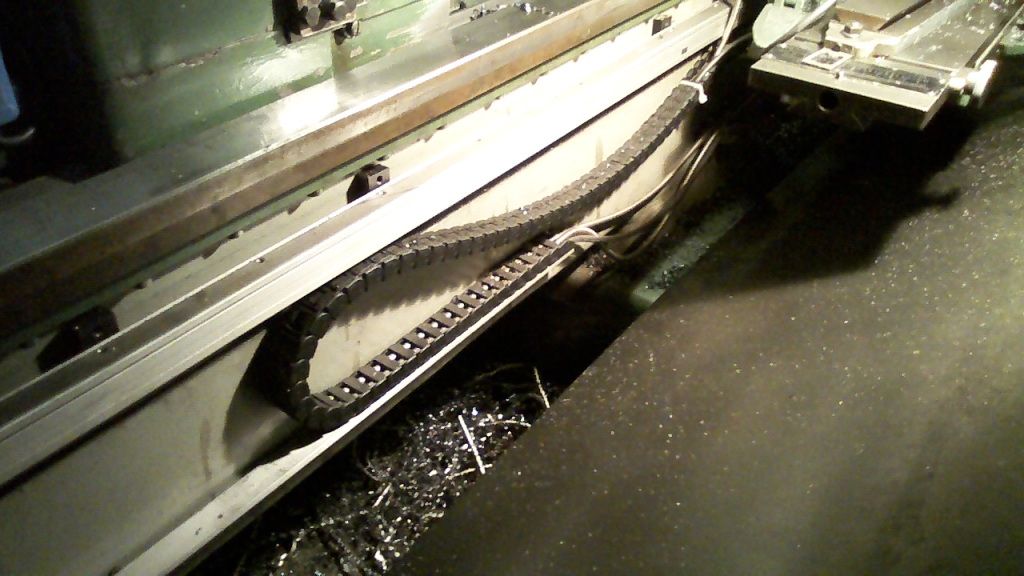dgfoster
Diamond
- Joined
- Jun 14, 2008
- Location
- Bellingham, WA
I do some occasional work and maintanence in a fabrication and repair shop that has been in business since the late 40's. The bed of the reconditioned 1960's Lucas horizontal mill (in truly excellent condition mechanically)there has about 8 feet of travel in the Z axis. So, the cable to the DRO head in that axis has a lot of slack in it most of the time since usually the bed is within a foot or two of minimal travel. Presently the cable is not supported (ya, I know but not my decision) and so it is very vulnerable to damage. Well, the owner noticed a few days ago that the Z readout had stopped working. A little trouble shooting indicates one of the conductors in the Z cable must be cracked.
I am supposed to confirm the crack and replace the cable. I hate to go to the trouble without figuring out a better way to manage the slack cable or else the fix will be only temporary.
So, how to support the slack cable in a way that keeps it off the floor and still allows full travel? At the same time I need to not have any localized area of the cable do all of the bending or it will fail early. Using something like a coarse spring to zip-tie support the cable sounds like a possible solution. The DRO is a long-obsolete but otherwise good Dynamic Research unit. So, no support (like spring-coiled cabling) is available off-the-shelf.
Ideas?
Denis
I am supposed to confirm the crack and replace the cable. I hate to go to the trouble without figuring out a better way to manage the slack cable or else the fix will be only temporary.
So, how to support the slack cable in a way that keeps it off the floor and still allows full travel? At the same time I need to not have any localized area of the cable do all of the bending or it will fail early. Using something like a coarse spring to zip-tie support the cable sounds like a possible solution. The DRO is a long-obsolete but otherwise good Dynamic Research unit. So, no support (like spring-coiled cabling) is available off-the-shelf.
Ideas?
Denis


